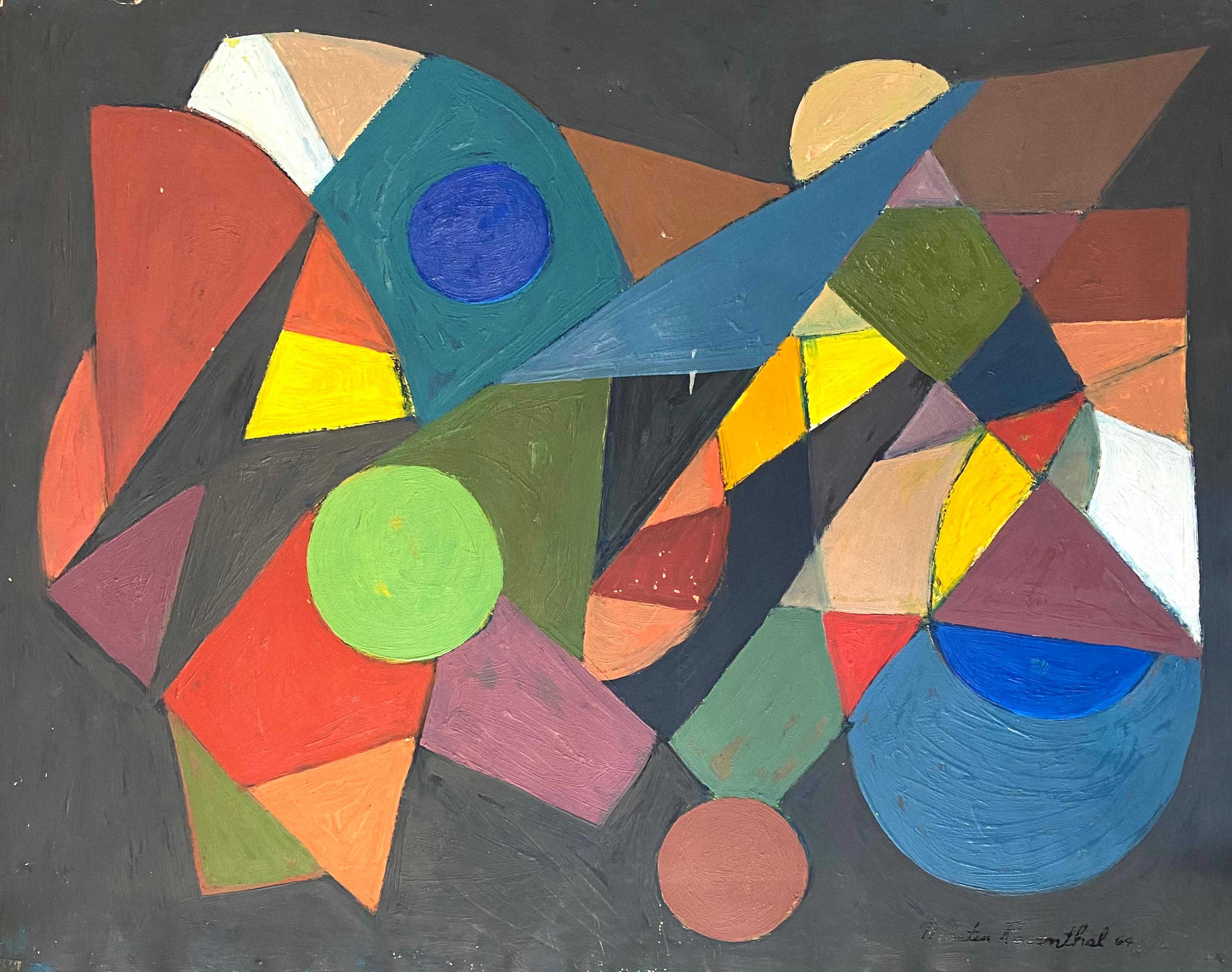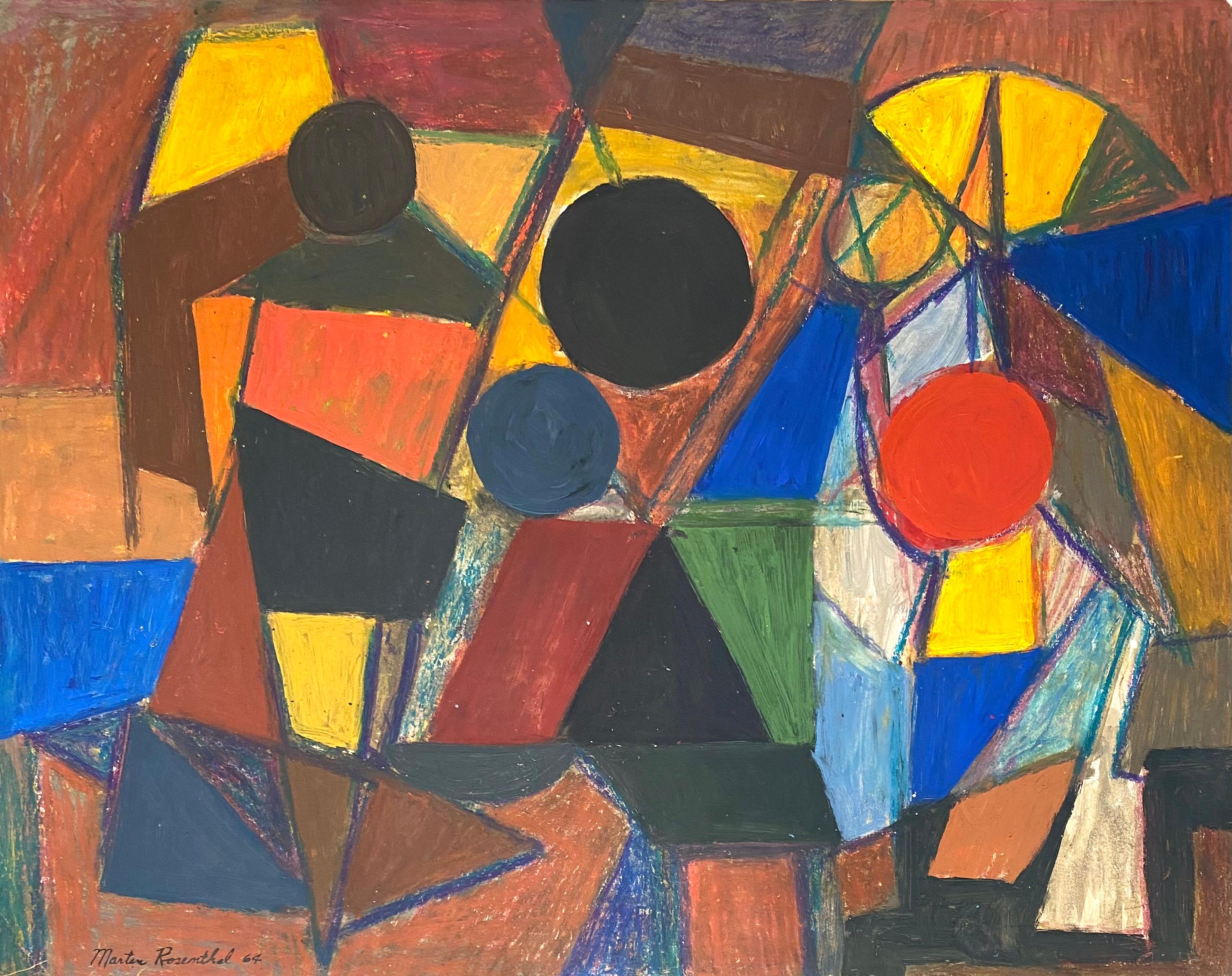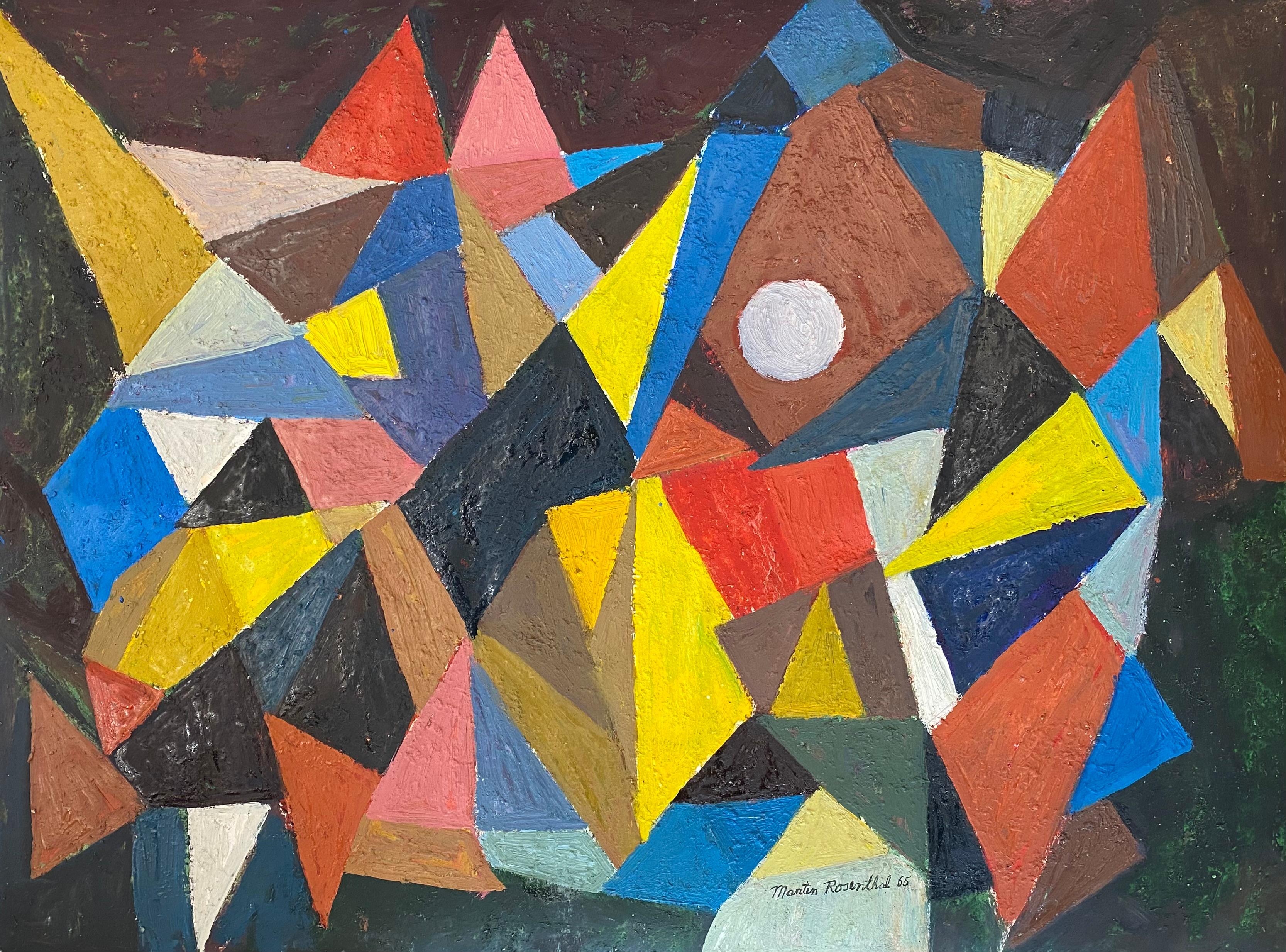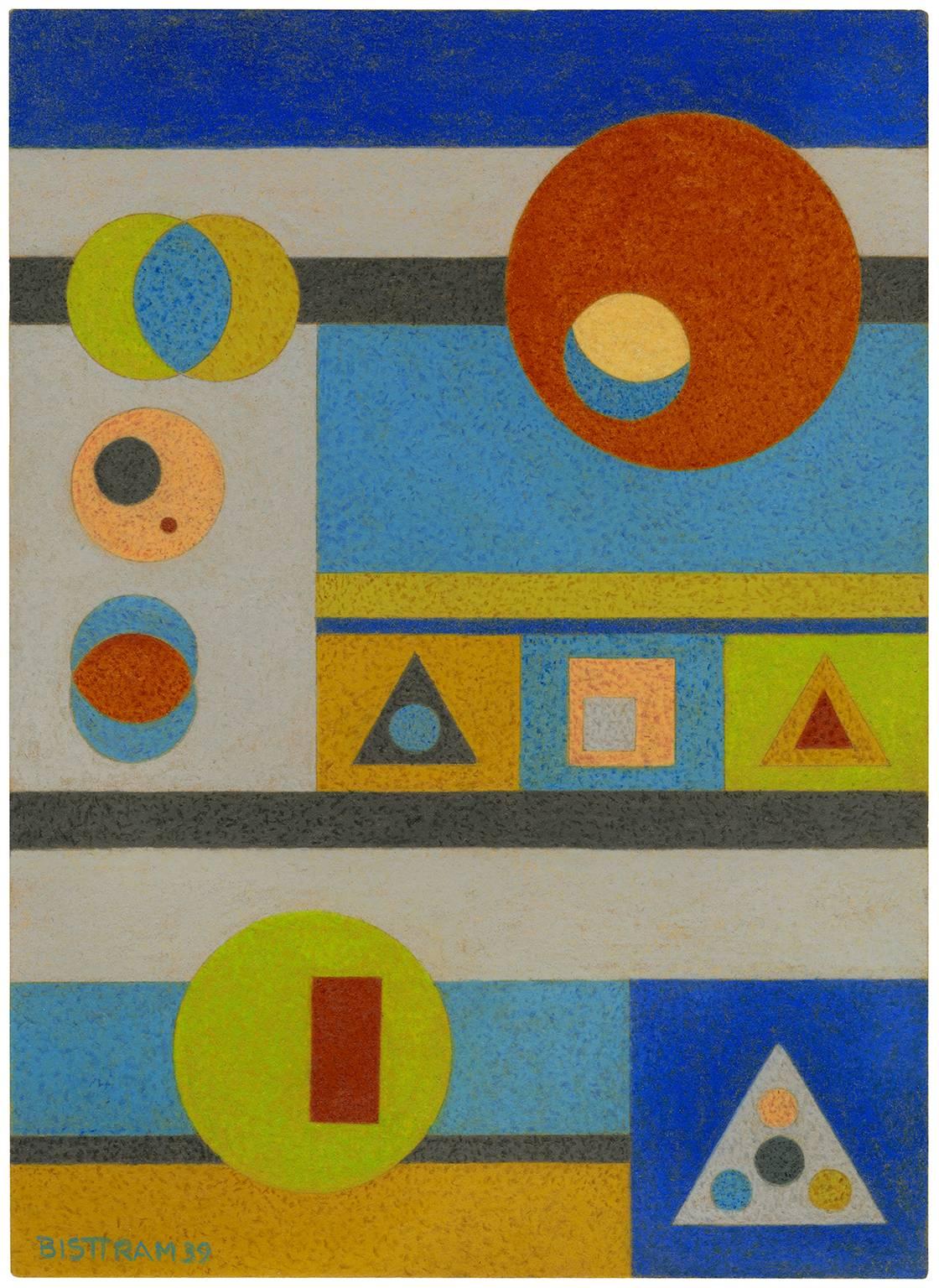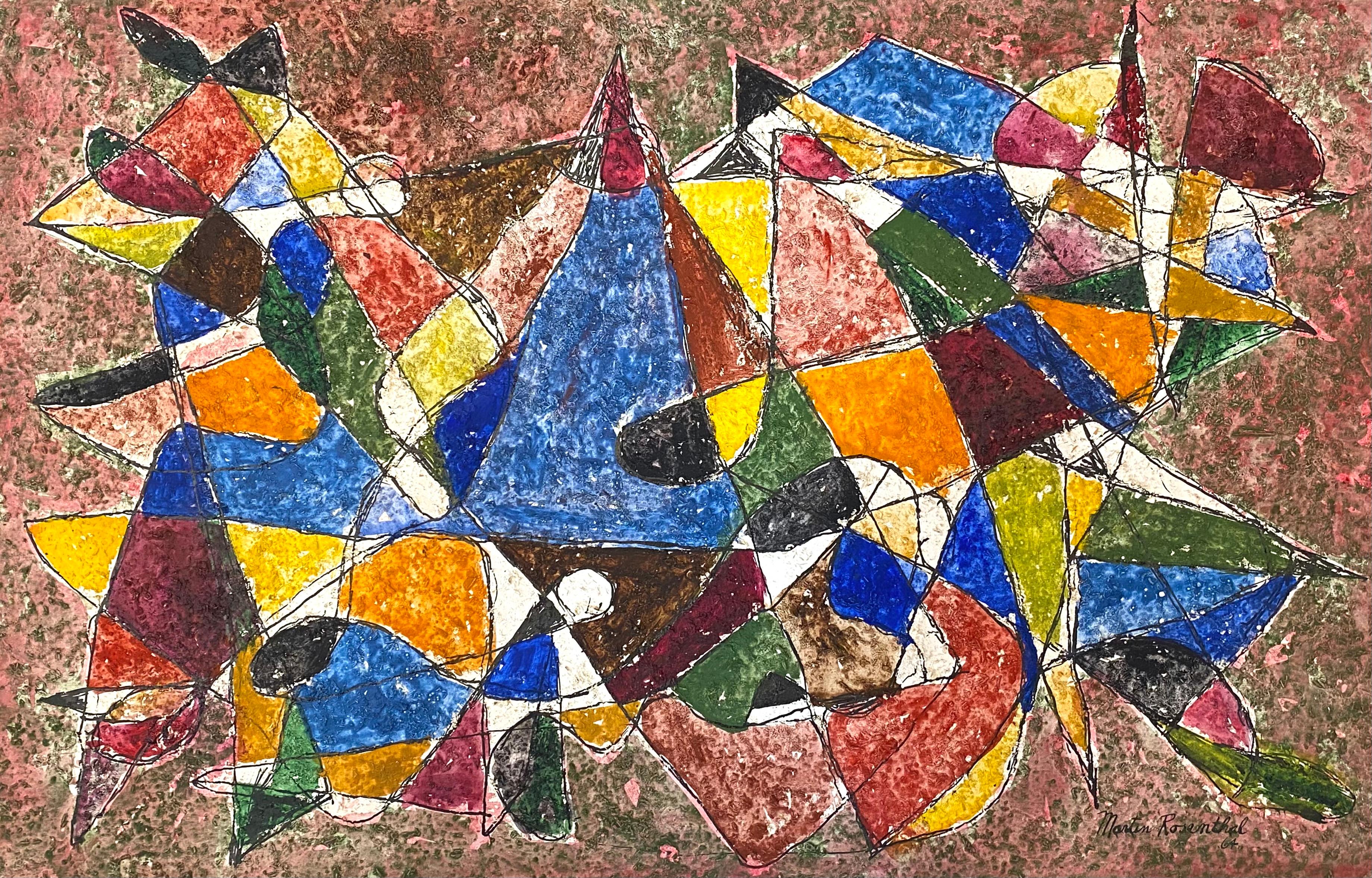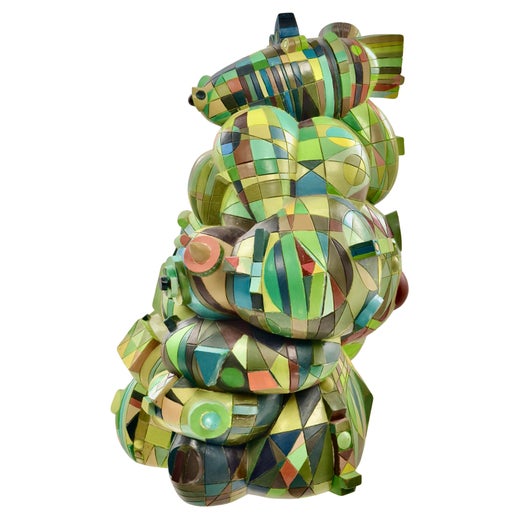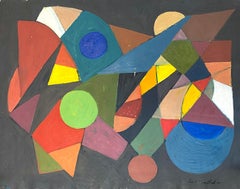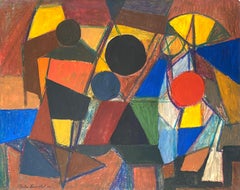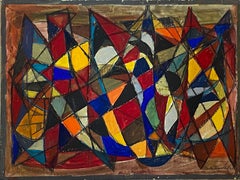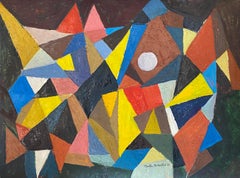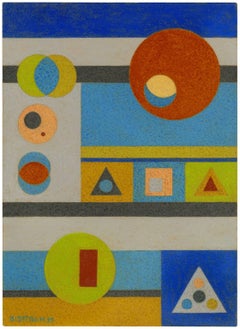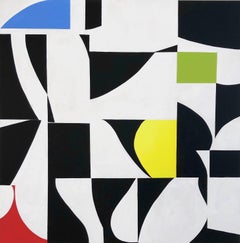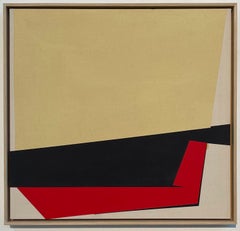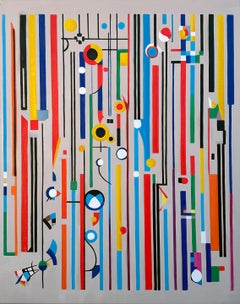Want more images or videos?
Request additional images or videos from the seller
1 of 14
Alexander Ney“Untitled”1999
1999
$8,500
£6,485.09
€7,416.08
CA$11,978.32
A$13,061.07
CHF 6,931.38
MX$157,904.10
NOK 87,721.63
SEK 80,409.07
DKK 55,390.51
About the Item
Original oil on canvas abstract geometric painting by the well known Russian/American artist, Alexander Ney. Condition is excellent. Signed verso “A Ney”. Dated verso 1999. The painting is housed is a thin pine artists strip frame with recent repairs. Overall framed measurements are 47 by 73 inches. Provenance: Alexander Ney, New York.
Alexander Ney (Russian/American (1939- )
After being given private art lessons at the home of influential Russian sculptor V.V. Lishev (1877–1960), from 1954 to 1957 Ney studied at the Art School of the Leningrad Academy of Arts, and later at the Art School of the Moscow Surikov State Academic Institute of Fine Arts from 1957 to 1959. Ney befriended a wide number of progressive-minded art students, now stars of the contemporary Russian art scene such as Alexander Kosolapov, Leonid Sokov, Alexander Yulikov, Lev Nussberg and Vadim Kosmatschof. His relentless efforts in creating strikingly new interpretations of art quickly made the young artist legendary amidst his peers. Artists Alexander Kosolapov and Igor Makarevich, amongst others, recall that Ney played an influential role in their early years.
From 1965 to 1967, Ney taught sculpture to children at the House of Young Pioneers in Leningrad. Students included future Russian novelist Sergei Dovlatov (1941–1990).
In 1967 through 1969, Ney attended art history and theory courses at the Ilya Repin Institute. He continued to perfect his skills as both a painter and sculptor, as well as an art theoretician.
Due to his highly productive creative output's clashing with the Soviet mandates of Socialist Realism, Ney absconded to France in 1972 on a tourist visa, as immigration was not permitted. His was granted residencies and established studios in the famed art colonies of both Cité internationale des arts in Paris and Villa Arson in Nice. In 1974, at the encouragement of American Abstract Expressionist painter Elaine de Kooning (wife of Willem), he immigrated with his family to the United States.
One of the first of several noted cultural figures whose early departure inadvertently signaled the start of a new wave of American immigrants from the Soviet Union, the legendary late American designer Gene Moore discovered Ney's work at a chance meeting at The Russian Tea Room. As the longtime Vice President of the flagship landmark location of Tiffany & Co. on Fifth Avenue and 57th Street, having displayed the works of contemporary artists Robert Rauschenberg, Jasper Johns, James Rosenquist and Andy Warhol, Moore created displays featuring Ney's works annually since 1978 for over thirty years.
On May 29, 1997, a 4-alarm rooftop fire apparently caused by a neighboring commercial building descended into Ney's two-floor home and studio located in Manhattan's Diamond District, destroying thousands of artwork.
In 2009, the National Centre for Contemporary Arts (NCCA) in Moscow held a special anniversary exhibition to honor the artist's 70th anniversary. NYC Mayor Michael Bloomberg wrote in the accompanying publication's introductory forward:
″Throughout his career, Mr. Ney has made an indelible impact on the creative life of our City and beyond—building a diverse and unique range of work that has inspired and moved individuals from around the world. What’s more, Mr. Ney’s success demonstrates the boundless potential of the New York immigrant experience, and his hard work and perseverance set a wonderful example for us all. On behalf of the City of New York, I applaud Mr. Ney for his tremendous achievements and invaluable contributions to the cultural life of our City.″
- Creator:Alexander Ney (1939, American)
- Creation Year:1999
- Dimensions:Height: 46 in (116.84 cm)Width: 72 in (182.88 cm)Depth: 2 in (5.08 cm)
- Medium:
- Movement & Style:
- Period:
- Condition:
- Gallery Location:Southampton, NY
- Reference Number:1stDibs: LU14116011802
Alexander Ney
Alexander Ney, born in 1939, is Russian-American sculptor and painter. He immigrated to the United States in 1974 and has since lived and worked in New York City. Developing several individualistic styles in modern art, he is most famous for his unique work in terra cotta sculpture, involving heavily perforated surfaces and intriguing forms. Notable collections of Ney’s sculptures, paintings and drawings are held at: Museum Beelden aan Zee, containing the largest collection of international sculpture in the Netherlands, The State Russian Museum, St. Petersburg, Russia, The State Tretyakov Gallery, Moscow, Russia, The State Pushkin Museum of Fine Arts, Moscow, Russia, The Moscow Museum of Modern Art, Moscow, Russia, The National Centre for Contemporary Arts, Moscow, Russia, The ART4.RU Museum of Contemporary Russian Art, Moscow, Russia, The Jane Voorhees Zimmerli Art Museum at Rutgers University, USA, The Nasher Museum of Art at Duke University, USA, The Yeshiva University Museum, New York, USA, The Mead Art Museum, Massachusetts, USA, The McMullen Museum of Art, Massachusetts, USA.
About the Seller
5.0
Platinum Seller
Premium sellers with a 4.7+ rating and 24-hour response times
Established in 1977
1stDibs seller since 2013
557 sales on 1stDibs
Typical response time: <1 hour
- ShippingRetrieving quote...Shipping from: Sarasota, FL
- Return Policy
More From This Seller
View All“Abstract 4”
By Martin Rosenthal
Located in Southampton, NY
Original oil paint on heavy archival paper abstract by the American artist, Martin Rosenthal. Bold, vibrant colors. Signed lower right by the artist and dated 1964. Condition is goo...
Category
1960s Modern Abstract Paintings
Materials
Oil, Archival Paper
“Abstract #3”
By Martin Rosenthal
Located in Southampton, NY
Original oil paint on heavy archival paper abstract by the American artist, Martin Rosenthal. Bold, vibrant colors. Signed lower left by the artist and dated 1964. Condition is very...
Category
1960s Modern Abstract Paintings
Materials
Oil, Archival Paper
“Abstract #6”
By Martin Rosenthal
Located in Southampton, NY
Original oil paint on heavy archival paper abstract by the American artist, Martin Rosenthal. Bold, vibrant colors. Signed lower right by the artist and dated 1965. Condition is ver...
Category
1960s Modern Abstract Paintings
Materials
Oil, Archival Paper
“Abstract #7”
By Martin Rosenthal
Located in Southampton, NY
Original oil paint on heavy archival paper abstract by the American artist, Martin Rosenthal. Bold, vibrant colors. Signed lower right by the artist and dated 1965. Condition is goo...
Category
1960s Modern Abstract Paintings
Materials
Archival Paper, Gouache, Oil
“Abstract #5”
By Martin Rosenthal
Located in Southampton, NY
Original oil paint and gouache on heavy archival textured paper abstract by the American artist, Martin Rosenthal. Bold, vibrant colors. Signed lower right by the artist and dated 1...
Category
1960s Modern Abstract Paintings
Materials
Oil, Archival Paper, Gouache
“Abstract #1”
By Martin Rosenthal
Located in Southampton, NY
Original oil paint on heavy archival paper abstract by the American artist, Martin Rosenthal. Bold, vibrant colors. Signed lower right by the artist and dated 1967. Condition is ver...
Category
1960s Modern Abstract Paintings
Materials
Oil, Archival Paper
$960 Sale Price
20% Off
You May Also Like
Geometric Abstraction
Located in Myrtle Beach, SC
A unique, beautifully composed, large-scale geometric abstraction encaustic, with fresh colors, on fibrous buff, wove paper; the image extending ...
Category
Mid-20th Century Abstract Geometric Abstract Paintings
Materials
Encaustic
Geometric Abstraction 45
Located in King, ON
This abstract painting from series “Geoforms” is inspired by minimalism, modern art and hard edge.
This work is signed, dated and tilted by Artist on the back. Signed certificate of ...
Category
2010s Abstract Abstract Paintings
Materials
Canvas, Acrylic
Untitled
Located in San Francisco, CA
Sergio Nates
Untitled, 2015
Acrylic on canvas
Unframed dimensions: 21.75 x 23 inches
Framed dimensions: 22.75 x 24 x 1.875 inches
This one-of-a-kind acrylic painting on canvas inclu...
Category
21st Century and Contemporary Abstract Geometric Abstract Paintings
Materials
Canvas, Acrylic
$880 Sale Price
20% Off
Finding You Lilly Muth - Contemporary geometric abstraction - Oil Painting
Located in DE
Lilly Muth's geometric abstractions are colourful works full figures that of space such as the distance, shape, size, and relative position of figures. Her use of colour is bold yet ...
Category
21st Century and Contemporary Abstract Geometric Abstract Paintings
Materials
Canvas, Oil
"Untitled"
Located in Edinburgh, GB
Abstract Composition By Nicolas Issaiev. A very original, bright and emotional painting will refresh any interior and complement your art collection.
Category
20th Century Abstract Figurative Paintings
Materials
Canvas, Oil
Construction Composition, Geometric Abstract Oil Painting by Seymour Zayon
Located in Long Island City, NY
Artist: Semour Zayon American (1930 - )
Title: Construction Composition (After Kandinsky)
Medium: Oil on Board, signed
Size: 10 x 9.5 inches
Frame: 14 x 11.25 inches
Category
Mid-20th Century Abstract Geometric Abstract Paintings
Materials
Oil
